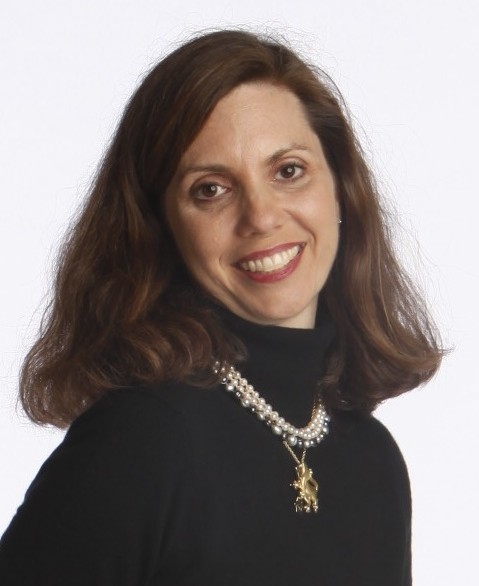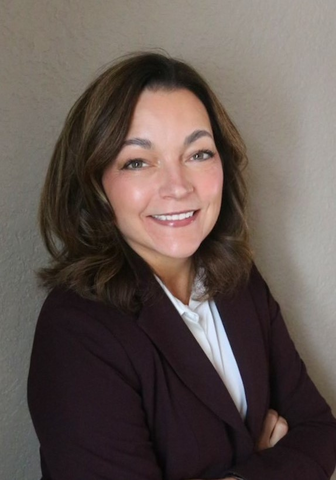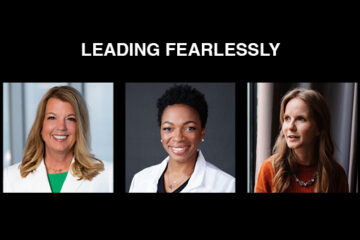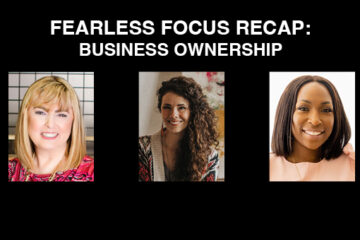
Women business leaders should establish relationships with banks early on, even if they aren’t yet in the market for borrowing to grow, a Wells Fargo executive told Fearless.
“They’re going to understand your business better when you [do] need it,” said Judith Goldkrand. Goldkrand is a Wells Fargo senior vice president, National Women’s Segment Leader and National Asian Segment Leader for Commercial Banking. She is based in New York.
Goldkrand and Becky Gibson, senior vice president and market executive for commercial banking in Iowa for Wells Fargo, sat down with Fearless last week while Goldkrand was visiting the region.
Goldkrand and Gibson discussed how women’s roles have changed during their careers in commercial banking and what things are most important for women business leaders to know as they make plans to grow.
This Q&A has been lightly edited and condensed for clarity.
What are some obstacles that women are facing in terms of capital?
Goldkrand: On the access to capital side, a lot of it is really an understanding issue.
Do you understand what type of capital you need? You understand when you need it, and what it’s going to do for you, so that you approach it accurately. And whether you need a small-business loan or a commercial banking loan, do you want angel funding, venture capital funding private equity? They serve different purposes. So one of the focuses that we have at Wells Fargo is we want to make sure that we have provided the resources to women-owned and -led businesses so that they can make good decisions.
One of the things that we did earlier this year is we sponsored a seven-part webinar series called “The Fundamentals of Capital.” We made it readily available through an open link so that people could actually go ahead and listen to the webinar series and educate themselves as they saw fit. In September, we’re sponsoring a women’s capital summit, where we’re going to offer not just panels and fireside chats, but it’ll be a room full of women founders, entrepreneurs, business owners, along with different capital providers so that we’re going to create that network opportunity for them to get to know each other so that women can feel like, “Oh, I need angel funding, I actually know somebody that I could call, where I can be in touch.” Because a lot of what happens for women is they don’t know where to start. They don’t have a pre-built-in network to understand where to access capital.
When you meet one on one with women entrepreneurs, what’s some advice that you’d give them in terms of capital?
Goldkrand: Be intentional. Understand your exit, or where you’re going with capital. I think when you take on capital, it’s a promise; it’s a promise to pay back if it’s debt, or it’s a promise to your investor to increase the value of your company so that you can exit. So you really want to be thoughtful about the type of capital you take on when you do it, the kind of risk that you’re accepting. The other big piece of advice that I give to women, especially women owners or leaders, is you need to own your own numbers. If you’re the business owner, it’s important to the bank that you understand the basics of the financials of your company.
Gibson: And that’s true of any entrepreneur. Because sometimes you know what you know – you’re really good at whatever the widgets you’re making or whatever it is – but that financial piece is so important to understand, too.
Goldkrand: I think the other thing is to form a relationship with a bank at whatever stage you are. That’s true not just for women. … The more that you can share what you’re doing, what your vision is, what your history is of the business with somebody who works, for example, on Becky’s team, the more inclined they’re going to be able to help you, because they’re going to understand your business better when you need it.
Gibson: Someone like a Wells Fargo, even though we’re a traditional bank, we have different layers of capital. Now, that’s probably not your startups, it’s more as you grow, but it’s nice to know that those options are out there and exist.
Goldkrand: Certainly we serve the entire spectrum of businesses through their life cycle. So if it’s startup businesses, we’re serving them through our branches, through small business lending, and then as they grow … some of these various types of capital we have available, all the way to the other side where we’re going to leverage our investment banking services, to help them potentially acquire a business or sell their business or an IPO and issue a public bond.

Gibson: I’ve been banking in the Iowa market for 33 years. And when I first joined, it was a different bank. I’ve been with Wells Fargo 17 years, but prior to Wells Fargo, I was with a different bank locally that covered the whole state. I was one of the very few women in banking. I had hardly any peers who were women. It was all going to meetings and being in a room full of men. My customers kind of mirrored that same situation. It was very much men who dominated in the business world, and you just didn’t have as many women back then. It’s so refreshing now to have so many women CFOs, women CEOs, women owners that we’re doing business with. Not only that, you know, as I indicated, I’m a woman who’s the market executive for Iowa. I report to a woman who is the division executive for our five-state division, who reports to a woman who’s the region exec for our entire 11-state region, who reports to a woman who runs all of commercial banking for Wells Fargo. And it’s not because you’re a woman, it’s because they’re good. Judith and I were having this conversation earlier; it’s just so different to be able to go into a room and not feel like you’re the only woman in the room. Sometimes it’s a man who’s standing awkwardly not knowing who to talk to.
What do you think drove that change over the past three decades?
Goldkrand: I think part of it is just a culture shift, not just internally, but in our country, where women have different opportunities. It may be you [Gibson] and I were more unusual in the moment, because we wanted to enter into a career that looked like this, and more women were siphoned into other jobs. But I think one of the things about Wells Fargo, I think they’ve done a really great job; people can start anywhere in the company and spend a career. We have people who started their careers as tellers, who are now very senior in commercial banking or they’re in investment banking. So you can really create a career and have professional development in a bank like Wells Fargo, where we have that national presence, with so many different lines of business, and interesting opportunities. And the bank is very focused on making sure that our team members and our leadership teams reflect the communities in which we work. One of the roles that I have is to create portfolios and help diversify the portfolios that we work with, so that our portfolios start to look like the communities in which we live and work as well.
Sometimes younger generations get a lot of flack for a lack of financial literacy, or what it takes to really be an entrepreneur. Are you seeing that?
Goldkrand: From Wells Fargo’s perspective, we’ve taken a focus on education. I’ll give you three examples. One is what we call Hands on Banking. Hands on Banking is an online program. And we have it for different age groups all the way from elementary school through adults. And there’s also a business owner module. People can go in and you can do it self-paced, or teachers can pull down our information and they can use it in their classrooms or in after-school programs. So I think Hands on Banking is one of the contributions that we’re trying to make institutionally to say we know that people not just need financial literacy but they need financial readiness.
Then, the other side of it on the small-business side is we have something called Connect to More. Connect to More is specifically for women entrepreneurs through our small business team. The small business team has a relationship with the Nasdaq Entrepreneurial Center. Through our relationship, we’re providing mentoring and coaching and some classes, and then we also are working, for example, with WBENC, which is the Women’s Business Enterprise National Council, and we participate in their financial center of excellence. So we provide webinars and thought leadership for women entrepreneurs of all sizes to come and learn.
Gibson: Even outside of Wells Fargo – I went to the University of Iowa, and they now have an entrepreneurial degree that didn’t exist when I went to college.
Do you have any advice for women who are entering into either a mentor or mentee relationship as far as how to get the most out of it?
Goldkrand: From a women business owner perspective, I highly encourage women to get into peer advisory networks, and there are a lot of them, depending on the size of your business. Having the opportunity to work with other women and learn from their experiences and to learn together has really helped a lot of women scale their businesses much more quickly than they could do it on their own. You’ll hear many women, and many CEOs probably say in general, it’s lonely at the top. And they feel that they don’t have someone to talk to. And sometimes they’re afraid because they don’t want to talk to a competitor because they think it will jeopardize their business.
So these peer advisory groups give them that opportunity to learn. The other piece from a woman’s perspective is to think about how to leverage a certification of being a woman-owned business. So as a woman-owned business, we can apply through WBENC for a woman-owned certification. Then companies like Wells Fargo, or any other large companies where we have goals to diversify our supply chain, when they apply, then they come in and they’re certified so that we know that we can potentially count their spend if we choose to do business with them. I think for women, unfortunately, women are over-mentored and under-sponsored. And so I would encourage women to not just have mentors, but really look for sponsors to help them in their careers.
Is there anything I didn’t ask you that I should have?
Goldkrand: I think women have to define their success. Getting funded with venture capital funding isn’t the only way to be successful. If you take venture capital funding, you have to be prepared to exit in a certain number of years, because that’s what the investors are expecting, and so women need to think about what is the path to success that they’re looking for. And perhaps a bank loan or an SBA loan is where they want to go and where they want to stay. And they don’t have to take on outside investors, necessarily, in order to succeed. It won’t necessarily affect their valuation once they’re ready to exit. But they need to be mindful of that.


